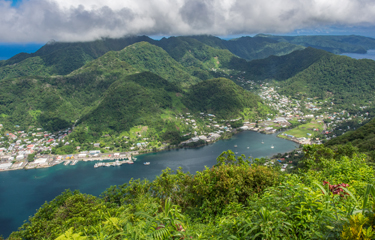The Western Pacific Fishery Management Council (WPFMC) is trying to tackle multiple problems faced in its jurisdiction, including ineffective whale bycatch solutions, U.S. Endangered Species Act (ESA) consultations, creating more-equitable fisheries, and issues regarding fishery rights in American Samoa.
The council has been working to tackle how to handle false killer whale bycatch in the region's tuna fisheries – mainly in Hawai’i and American Samoa. In 2013, a plan to use weaker circle hooks that are 4.5 millimeters or less in diameter was created. The weaker hooks were supposed straighten and release whales caught while still remaining strong enough to hook bigeye tuna and other marketable fish species.
The issue, according to council members, is that the hooks aren’t doing what they were intended to do. Since 2013, only 10 percent of the interactions with whales resulted in the hooks straightening. WPFMC Councilor McGrew Rice said the “weaker” hooks will not straighten if the hook is caught in the corner of a whale’s mouth.
“The key is to cut the line close to the hook. A hook in a mouth will not kill a fish,” Rice said.
However, a 2021 study showed that if the hooks are made any weaker, the value of bigeye tuna caught will be reduced, economically harming the fisheries that rely on the species.
“Weak hooks are not the best way to reduce the false killer whale interactions with the Hawai'i fleet,” Roger Dang, WPFMC council vice chair for Hawai'i, said. “Considering the prices of fuel and bait are up, any economic impacts from using weaker hooks would increase the difficulties in operating under these conditions. We need to focus our limited resources on what we believe will have the greatest impact.”
The council said a new plan should be prioritized that develops strategies to reduce trailing gear and whale predation on fish caught by fishermen, which leads to interactions. The Hawai’i deep-set longline fishery interacts with pelagic populations of the false killer whales, and due to the species' small population, the ESA requires the WPFMC put a plan in place for managing interactions.
However, according to the council, the National Marine Fisheries Service has been continually delaying any updates on the plan, and the current completion date for a plan – April to May 2022 – indicates it will likely be delayed once again.
“Our experience with ESA consultations over the last several years have left us with the impression that our council process is not respected,” WPFMC Chair Archie Soliai said. “The council is here to ensure the sustainability of our region’s fishery resources as mandated by the Magnuson-Stevens Act.”
The council is asking NOAA’s Pacific Islands Regional Office to come up with some form of timeline on when the ESA consultation will be completed.
“We ask PIRO to provide us with realistic timelines and meaningful dialogue, so we may work together to complete these biological opinions and ensure that our fisheries can continue to operate in compliance with ESA,” Soliai said.
The council has also asked NOAA to remove a proposed sanctuary in the Marianas from the national inventory, and instead assist the Friends of the Mariana Trench Monument in developing a revised proposal that will then be vetted by the Commonwealth of the Northern Mariana and Guam communities, which have developed a proposal with broader community support.
The council said the newer plan has broader support and will greatly reduce the need for sanctuary protection, as the concerns listed by the sanctuary – including fishing regulations – are covered under the new management plan and the Magnuson-Stevens Act.
The council is also working to resolve fishery issues in American Samoa, where StarKist’s cannery is the largest employer. According to council members, the U.S. needs to address issues that have caused a reduction in the U.S. fishing vessels operating in the Pacific tuna fishery.
In October 2015, U.S. tuna operator Tri-Marine petitioned the U.S. government to remove high-seas fishing limits for vessels that offload at least 50 percent of their catch in American Samoa. The company argued Western Central Pacific Fisheries Commission (WCPFC) restrictions were impeding its ability to operate in the territory. That petition was denied, but at the time, the NMFS said it would take a second look if the situation made it clear that the denial was impacting the territory’s economy. Tri-Marine subsequently closed its American Samoa cannery in 2016.
“Seven years have passed and American Samoa’s dire situation is self-evident with the exodus of U.S. vessels and the need to supply our cannery,” Soliai said.
The council has recommended that NMFS clarify its 2015 ruling to acknowledge that the American Samoa purse-seine fleet is distinct from the U.S. fleet. Currently, American Samoan vessels do not have access to high seas, and most purse-seine fishing effort now occurs in the waters of small island states north of the territory.
As part of its effort, the council decided to send letters to both NOAA and the administration of U.S. President Joe Biden to request the right for American Samoa to be recognized as a small island developing state (SIDS) in the WCPFC. American Samoa lost its U.S. tax bill credits in 2018, which then-StarKist CEO Andrew Choe had said helped American Samoa-based tuna canneries remain competitive with facilities in Asia.
“The current playing field is not level for American Samoa because our purse-seine fleet is not seeing the benefits that we deserve as a territory,” Soliai said. “The United States should take seriously the needs of its territories and this plan will help to move this forward.”
Photo courtesy of Brenda Smith DVM/Shutterstock







